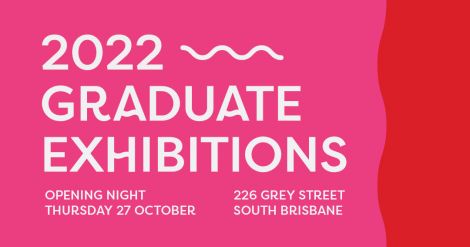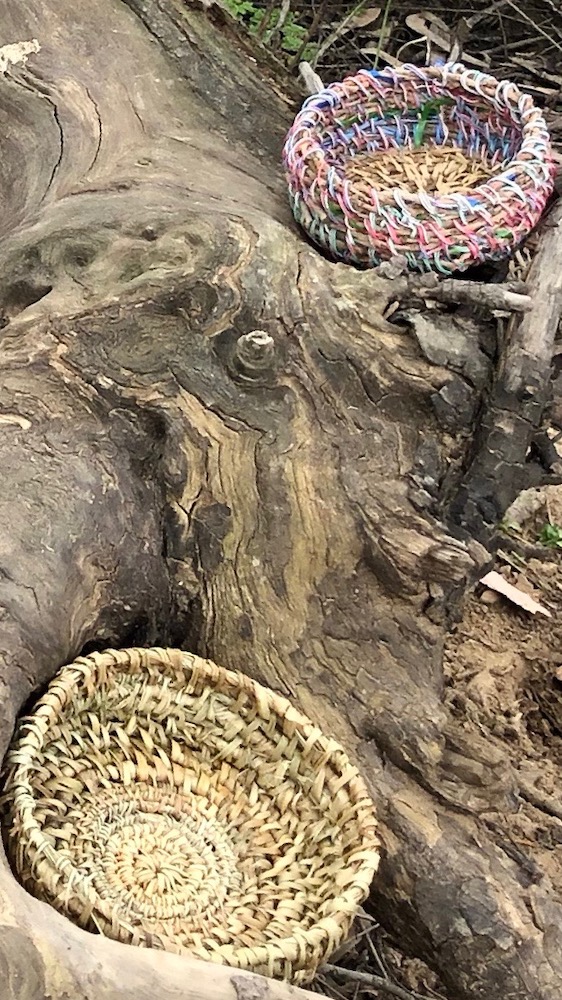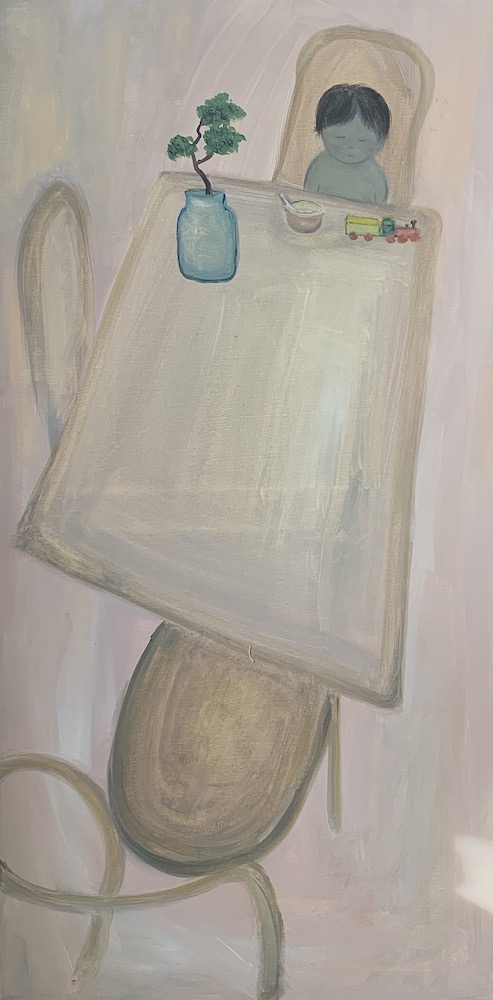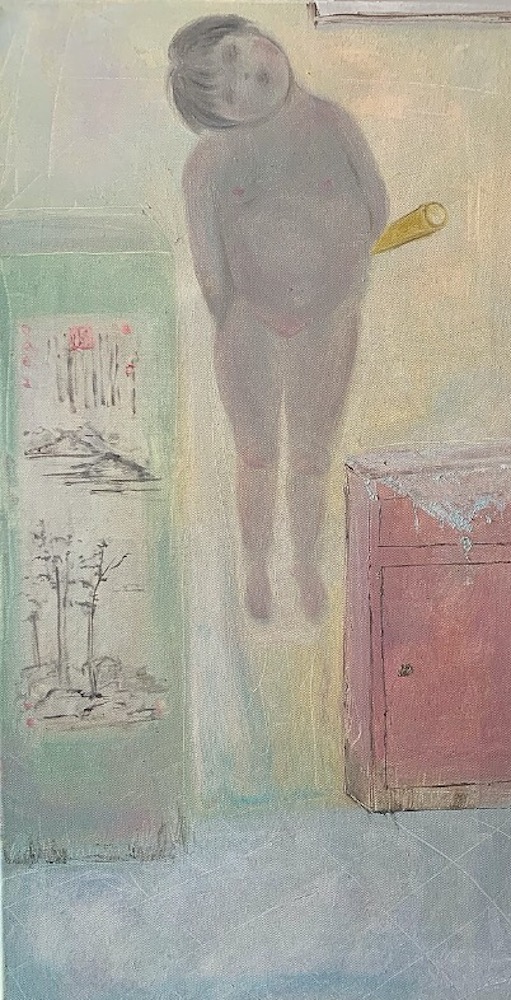Dearne Dettrick
Urban Organisms
Urban community denotes living in both physical space (the built environment) and contextual space, the felt connection to locale. In response to growing social isolation in cities and urban dwellers reduced interaction with nature this research aims to increase connection to locale through installation in urban public space. Interventions that focus on fragility and the transmutability of natural forms create opportunity for the preoccupied passer-by to actively experience their immediate environment. By interrupting the pedestrian’s fixation with their device and shifting focus to their ignored surrounds the oblivious urbanite can be guided to reunite with place.
This enquiry into site-specific installation draws on the theories of Miwon Kwon, Nancy Fraser and Rosalyn Deutsche to extend the discourse on art practice in public space. The project employs a DIY urbanism method of intervention as visual catalyst to activate neglected public space. Practitioners who invite an engaged perceptual experience through subtle interventions in the expanded field including Andy Goldsworthy, Ken Hiratsuka and Paige Smith are examined. Using aesthetic philosophy and responding to biophilic design principles this practice involves a series of subtle unsanctioned ephemeral installations. Clusters of decomposable three dimensional paper pods layer and bind into the urban fabric. The project invests in the local, transforming remnant undervalued public space to become more visible, playful and engaging. The series of interventions prompts curiosity, creates a sense of familiarity and facilitates a positive spirit of place.
Keywords: Urban, public space, connection, subtle, ephemeral, installation, nature, sense of place.
Detail image shown below. View full size image.
Ronda Sharpe
Seeing Wiradjuri cultural continuum and identity through the lens of the archive
My studio-based research project Everything is still connected II focuses on traditional and contemporary Wiradjuri languages, culture and artefacts. My research acknowledges the continued connection to Country through Indigenous and Western archives and my studio-based practice. The investigation of traditional objects, including carrying vessels, stone, wooden and fibre tools, demonstrates the existence of sustainable Indigenous agricultural practices and the deep biocultural knowledge held by Wiradjuri people that enabled them to successfully live a strong and healthy life on their Country.
My environmental arts practice combines the use of repurposed mediums such as data and electrical cables along with natural fibres such as grasses and palm tree fronds transforming them into contemporary sculptural forms. The fusion of contemporary and historical Wiradjuri weaving customs with reclaimed post-industrial materials creates a visual story that comments on present day environmental issues while the use of cables, previously used in communication technologies, strengthens the metaphor of sharing traditional weaving practices with a modern context.
Within the lens of Indigenous and Western archives, my making of contemporary artefacts acknowledges the continuum of Wiradjuri cultural practices signifying the resilience, strength and survival of our people. By employing decolonising research methodologies, I privilege Wiradjuri voices and experiences that contribute to our ways of knowing, being, and doing. Through my learning, knowledge of the past will be passed on for current and future
Keywords: Wiradjuri, culture, continuum, archive, decolonising, country, connection, knowing, being, doing.
Rudiger Wasser
Jnkspace: Pictures of the Globalisation of Public Space
This photographic enquiry explores the privatisation of public space. It exposes dystopian aspects of globalisation through composition and discomforting style in a near black-and-white finish. Referred to as “Non-Places” by anthropologist Marc Augé and further specified as “Junkspace” by architect Rem Koolhaas, places that have no relation to history, identity and culture exist in a globalised world of neoliberal market policy. Market-driven politics have led to the worldwide homogenisation of urban environments to the detriment of human interaction and local identity. Jnkspace aims to contribute to the discourse of “Non-Places” by exposing the commercial and privatised character of apparently public places, using intricate and dense framing and amplifying the hard and reflective surfaces of shopping malls and other contemporary commercial environments.
My work finds its artistic roots in the Düsseldorf School of Photography, with photographs of Bernd and Hilla Becher and their students influencing my photographic development, spanning from the aim of objectivity into the realm of digital photography. Andreas Gursky’s complex images inspired my interest in the discussion of globalisation. My work refers to Eugène Atget’s historical documentation of Paris in the 1920s, and Anthony Hernandez, who took up the topic of loss of identity through architecture by showing dystopian effects of politics and abandoned unfinished buildings.
The name Jnkspace borrows from Koolhaas’ essay about “Junkspace” and the marriage of air-conditioning and escalators, and Augé’s reference to the use of (advertising-) language in “Non-Places” while adding the current expediency of language-use in texting.
Keywords: Junkspace, non-places, globalisation, public space, Koolhaas, Augé, dystopia, neoliberal politics, shopping malls, urban architecture.
Suzanne Breeze
An Exploration of Joy in Art
This practice-led project explores representations of joy in scenes of domesticity in a range of visual artworks. The project seeks to determine how joyful art can affect both the artist and the viewer in a positive way. In particular, this paper explores the specific visual aspects of colour, and the inclusion of whimsy and beauty, elements which tend to elicit feelings of joy within us. Themes of depression, anxiety and poor mental health are common in contemporary art practice and public gallery spaces. Whilst these themes are important, as they reflect and comment on current discourses and experiences of mental health, I contend that there is also an opportunity for art to revel in and stimulate joy and happiness and work towards reshaping negative world views.
Working within the well-established art genre of domesticity, this project operates at the intersection of affect theory and the expression of joy within my practice. The works align with my perspective that beauty and joy is present in our everyday surroundings and recognition of these small joys in the everyday can be a source of joy and happiness for the individual. The chosen practitioners, Henri Matisse, Marc Chagall, Beatrix Potter and Margaret Olley, illustrate how colour, whimsy and beauty work to motivate joyous feelings. The practice led method involved the purposeful and deliberate inclusion of colour, whimsy and beauty in my work to convey a sense of joy in the works. The culmination of studio work has resulted in series of paintings which depict aspects of joy in my daily life. It is my aim that the paintings invite the audience to reflect on their own everyday activities and objects as sources of joy.
Keywords: Joyful, domesticity, colour, whimsy, beauty, everyday.
Xiaoqi Wu
From now on
My work is based on scenes, memories and experiences from my daily childhood. Through painting, I engage the audience in telling the story of my childhood experience and re-examining the relationship between the child and the original family. At the same time, the mirror in the painting allows the audience to participate. The work is not a closed two-dimensional plane. It blurs the boundary between reality and illusion. It encompasses the past, present, and future time in a mirror. The work reflects not only my emotions, but also the combination of all experiences the viewer feels.
In this project, I explored using mirrors as a painting medium. The work has a diary-like feel because I use my own experience as a source of creation and share highly personal details. I use a vague, low-saturation tone painting style to express the fragile and complex emotions and attitudes of the characters. In addition, the mirror in the picture represents "staring", from "being stared at" to "making oneself stared at" to "self-gazing". On the one hand, it carries my desire to understand myself and fragile emotions. On the other hand, it allows the audience to become a part of the work, thinking through the "gaze" of it.
In conclusion, I used the mirror as a medium to explore emotions, psychology and self-cognition, and created a series of works about the childhood memories of primitive families. I use the mirror as the carrier to carry the author's and audience's thinking about family and individuals.
Keywords: Contemporary painting, mirror, family, childhood, three-dimensional, gaze, emotion, sensitivity.
Yanni Li
Last Night I Dreamt
Anxiety may be a negative emotion that everyone has and tries to resolve. From my perspective, female’s anxiety has a unique composition. In terms of visual expression, when women's bodies or female characters are placed in different scenes as well as in various atmospheres, these pictures can convey a certain narrative. In the context of contemporary photography, this project uses self-portraiture to examine and provide a better understand of female anxiety.
The research is structured around self portrait photography. Acting as the protagonist, I appear in a series of scenes that explore tropes of female anxiety. In these set scenes, I not only acted as a watched object, but also appeared as an active performer. In addition, a space where fantasy and fear are combined is constructed in these photos, to further explore and analyse the existence of inner anxiety, therefore finally show female anxiety through photography.
It’s like Cindy Sherman played different female roles in her Untitled Film Stills series, and Guy Bourdin creates a surreal scene through the composition of the female body and space. Furthermore, the study investigates Fiona Carson research on "uncanny" in contemporary art, it also contains Ana Peraica’s in-depth exploration of Narcissism, and Jeon Hyesook’s study about Lee Bul's artistic practice, as well as combines the interpretation of Freudian psychoanalysis in different situations.
In conclusion, studying female anxiety disorder is a process of thinking about women's self-worth, communicating this theme through visual art is an excellent exploration of visual imagination. In particular, the way of taking self-portraits through photography can be a more intuitive experience of self-exploration and capture the moment when someone being trapped in anxious mood. At the same time, it shows the complexity of the female image and the chaos of many emotions at the same time. Sweetness and fear coexist.
Keywords: Anxiety, feminism, identity, photography, self-portrait, performance, surreal, uncanny space.

QCA South Bank undergraduate exhibitions
See works from QCA South Bank Design, Visual Arts and Contemporary Australian Indigenous Art students.
- Thursday 27 October 2022 6 – 9 pm
Opening night
- Exhibitions open:
- 28 October – 3 November 2022, 10 am – 4 pm
- South Bank campus, 226 Grey Street, South Brisbane

QCA Gold Coast undergraduate exhibition
See works from Queensland College of Art Gold Coast Bachelor of Design students.
One night only
- Open for one night only
- Gold Coast campus, G14 Precinct, Parklands Drive

QCA Honours and postgraduate exhibitions
See works from Master of Visual Arts, Master of Design and Honours students.
- Thursday 11 November 2021 6 – 8 pm
Opening night
- Exhibitions open:
- 12 – 17 November 2021, 10 am – 4 pm
- South Bank campus, 226 Grey Street, South Brisbane














